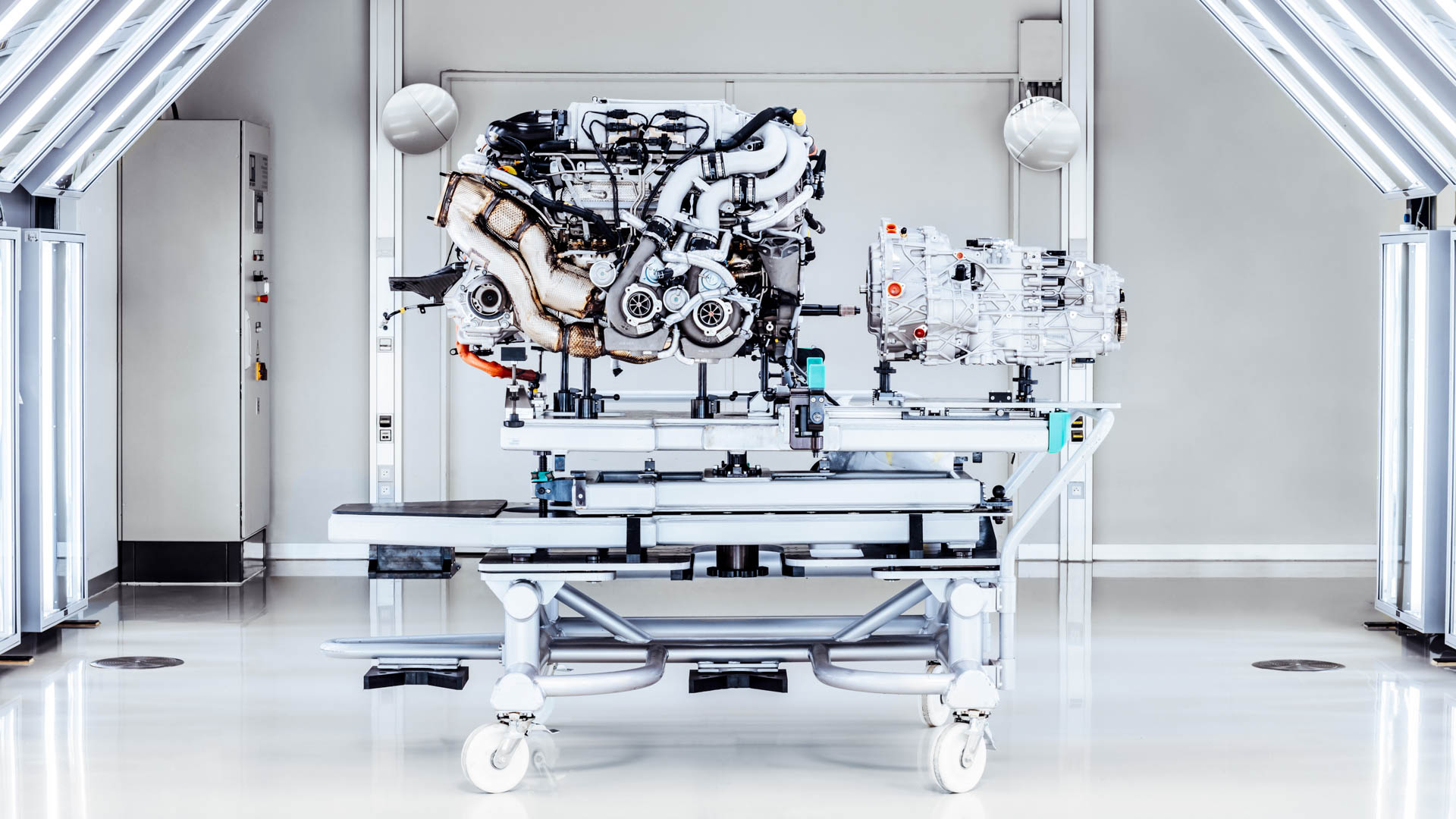

For almost 20 years, Bugatti watched every other automaker in the industry gradually downsize and turbocharge their engines. Even the worlds highest-performance sports cars have switched to smaller, more efficient engines. But not Bugatti. Instead, it’s stuck with its mighty quad-turbocharged 8.0-liter W16 engine, which is currently the largest production engine on sale, both in terms of displacement and cylinder count. And because of the industry’s current trend, it will likely never be topped.
In 2005, Bugatti shocked the world with the Veyron’s quad-turbo W16 engine. It was unlike anything anyone had seen in a production car before and gave the Veyron 1,001 PS (987 horsepower). That PS figure was important to then-chairman of the board at VW Ferdinand Piëch, who wanted to create the first production engine with over 1,000 PS. He initially drew his idea for the engine on an envelope while on a high-speed train in Japan. The drawing was originally for 18 cylinders, but while the cylinder count was knocked down to 16, the now-iconic “W” cylinder bank design remained.



“We had to engage in basic development for every component; every vehicle part had to be constructed anew and tested—even the engine test bench. The only thing we didn’t change was the pencils we used for drawing,” said former Bugatti head of technical development Gregor Gries.
Not only did the engine meet Piëch’s power requirements, it was also smaller than a V12, thanks to its dual eight-cylinder bank design. Piëch also wanted it to be smooth and easy to use and it was. The Veyron was capable of cruising at triple-digit speed with ease and it had a seemingly infinite amount of power on tap, at any speed. The Veyron was capable of 217 mph (350 km/h), which made it the fastest car in the world.



It’s one thing to be powerful but it’s another to be powerful and durable. To keep the W16 cool enough for such high-speed operation, a unique cooling system had to be developed, which used over 40 liters of water. A special Bugatti Ion Current Sensing (BIS) system had to be developed to eliminate engine knock because the engine was so smooth, even a misfire was difficult to detect.
Fast forward to 2016, and the Bugatti Chiron debuted with a massively updated version of the W16, this time making 1,500 PS (1,479 horsepower). It’s the Bugatti engine that’s still in production today. To make that extra power, larger sequential turbochargers were fitted, along with new valves, and increased lightweight materials, among many other updates. The result was a Bugatti that could reach 304.773 mph, making it the first production car in history to pass 300 mph. In the track-only, one-off Bugatti Bolide, the W16 engine made 1,825 horsepower.



Engines like the Bugatti W16 aren’t long for this world. The market is switching over to smaller engines, hybrid powertrains, and full electrification in many cases. There won’t be many more technical engine marvels like Bugatti’s mighty W16 again. It truly is the last of its kind and will be remembered as one of the high points in the history of internal combustion.